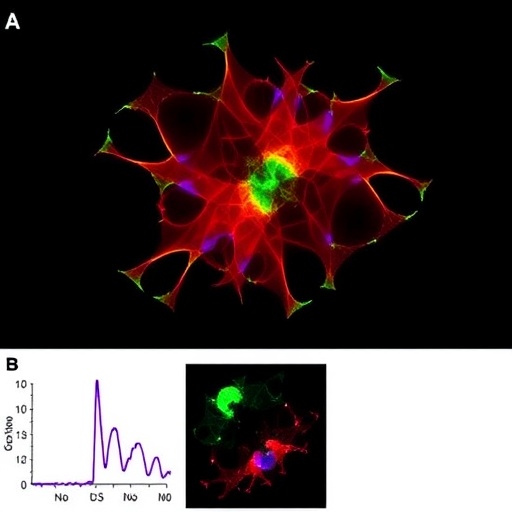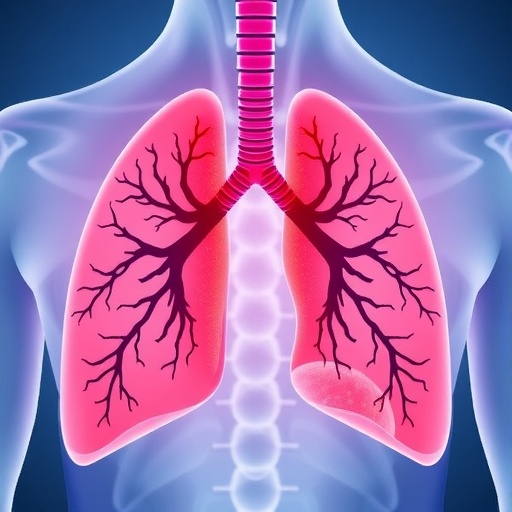PROTECT YOUR DNA WITH QUANTUM TECHNOLOGY
Orgo-Life the new way to the future Advertising by Adpathway
In a recent study conducted by Mengstie and Telele, researchers have tackled the critical issue of neonatal mortality, particularly in rural regions of Ethiopia. This area has been a focal point of concern for healthcare providers and policy makers due to its persistently high rates of infant death during the first 28 days of life. Through the use of advanced ensemble machine learning algorithms, the study aims to identify the key predictors of neonatal mortality, ultimately contributing to improved preventive measures and healthcare interventions.
Neonatal mortality represents a significant challenge in global health, with developing countries being disproportionately affected. Data reveals that approximately 2.4 million newborns died worldwide in 2020, many of whom fell within high-risk regions such as sub-Saharan Africa. Ethiopia, with its unique socio-economic conditions and healthcare structures, presents an urgent need for effective strategies to identify and mitigate risk factors associated with infant mortality. The researchers have embarked on this project in hopes of leveraging technology to yield insights that can save lives.
It’s essential to understand how machine learning can be integrated within the healthcare sector, particularly in rural settings where data may be scarce or unreliable. The researchers utilized ensemble learning techniques, which combine the predictions of multiple algorithms to generate a more accurate and robust outcome than any single model alone. This methodology enhances model performance and allows for a more nuanced understanding of the complexities surrounding neonatal health outcomes.
The study adopted a rigorous approach, beginning with a comprehensive data collection process. The researchers gathered data from a range of sources, including healthcare facilities, community surveys, and government health records. This multifaceted data collection was crucial, as it provided a richer context and depicted the diverse factors contributing to neonatal mortality. Key variables analyzed included maternal health, socio-economic status, access to healthcare, and environmental conditions.
After collecting the necessary data, the researchers implemented ensemble machine learning algorithms, including Random Forest, Gradient Boosting, and XGBoost. These algorithms were particularly suited for this study due to their ability to handle large datasets and manage the nuances inherent in predicting health outcomes. The models were trained and validated with data to establish their capacity to accurately predict neonatal mortality.
Through their analysis, the researchers discovered several significant predictors of neonatal mortality. Factors such as maternal education, access to skilled birth attendants, and the presence of healthcare facilities in close proximity were identified as critical indicators. Additionally, socio-economic variables, such as poverty levels and household income, played a substantial role in influencing neonatal health. Such findings underscore the interplay between healthcare access and social determinants of health, highlighting the need for integrative approaches to improve health outcomes.
The implications of this research extend beyond just statistical findings; they present a call to action for healthcare policymakers in Ethiopia and similar contexts. The insights gained could inform targeted interventions to improve maternal and neonatal health. For instance, enhancing the educational outreach to expectant mothers about prenatal care and nutrition can significantly boost outcomes for newborns. Additionally, strategies aimed at increasing access to healthcare and skilled providers can serve as preventative measures against neonatal mortality.
Further, the results of this study hold the potential to influence future research endeavors. By establishing a model for predicting neonatal mortality that accounts for various socio-economic factors, subsequent studies can build upon this foundation. Researchers can explore other regions, compare results, and develop tailored interventions that reflect the unique challenges faced in different contexts. The synergy of data science and healthcare is a burgeoning field, and studies like this one are leading the way towards innovative, data-driven solutions.
As the world grapples with the ongoing impact of health disparities, studies such as this herald a new age for technological integration in healthcare. Emphasizing data science proficiency within medical and public health training can empower the next generation of professionals to harness these tools for improved outcomes. Elevating the capacity for machine learning application could pave the way for predictive modeling across various health issues, transcending beyond neonatal mortality.
In conclusion, the research conducted by Mengstie and Telele provides invaluable insights into the factors contributing to neonatal mortality in Ethiopia. By combining the sophisticated power of ensemble machine learning with rich, contextual data, this study exemplifies how technology can drive significant changes in healthcare practices. It represents a crucial step towards addressing a persistent global health challenge and showcases the potential for innovative approaches in improving survival rates for one of the most vulnerable populations—newborns.
This research not only contributes to the existing body of knowledge but also serves as an inspiration for healthcare stakeholders. By prioritizing the integration of technology and data in efforts to combat health issues, there lies the potential for transformative change in the lives of countless families. The future of neonatal health in Ethiopia and beyond may very well hinge on such pioneering studies that couples rigorous analysis with actionable insights.
In summary, the relentless pursuit of better health outcomes for neonates necessitates a collaborative effort that leverages technology, policy, and community engagement. This multifaceted approach could redefine healthcare landscapes, reduce infant mortality rates, and ultimately foster healthier generations. As countries around the world strive to meet sustainable development goals focused on health, research of this caliber will serve as a cornerstone for successful interventions.
Subject of Research: Neonatal mortality in Ethiopian rural areas using machine learning techniques
Article Title: Predicting neonatal mortality using ensemble machine learning algorithms in the case of Ethiopian Rural Areas
Article References:
Mengstie, M.A., Telele, M.T. Predicting neonatal mortality using ensemble machine learning algorithms in the case of Ethiopian Rural Areas. Discov Artif Intell 5, 220 (2025). https://doi.org/10.1007/s44163-025-00305-w
Image Credits: AI Generated
DOI:
Keywords: Neonatal mortality, machine learning, healthcare interventions, Ethiopia, data analysis, pregnancy care.
Tags: advanced data analytics in healthcareensemble machine learning algorithmsglobal health challenges in developing countrieshealthcare strategies for newborn survivalimproving healthcare interventions in Ethiopiainfant mortality risk factorsmachine learning in public healthneonatal mortality predictionpredictors of neonatal deathrural healthcare challenges in Ethiopiasub-Saharan Africa neonatal healthtechnology in maternal and child health


 5 hours ago
9
5 hours ago
9





















 English (US) ·
English (US) ·  French (CA) ·
French (CA) ·